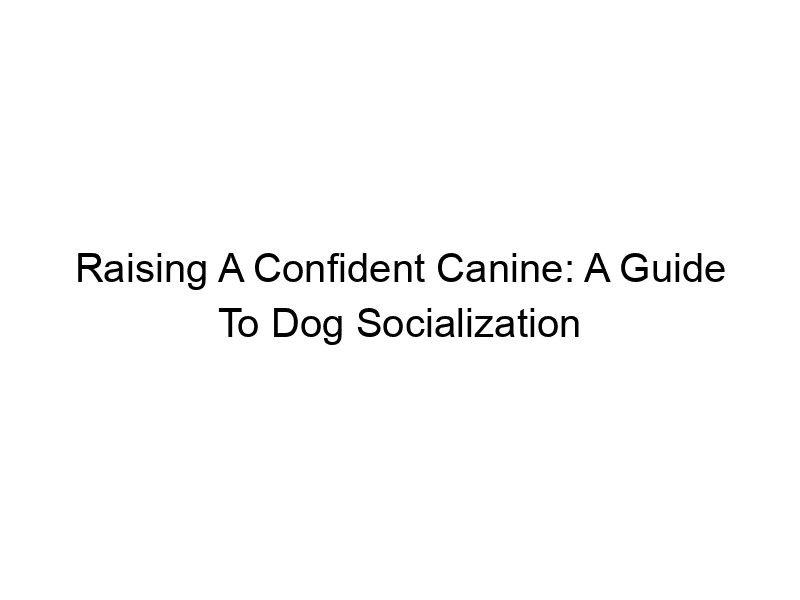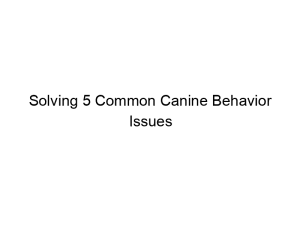Want a well-adjusted, friendly dog who thrives in any situation? Then you need to understand the importance of socialization. This comprehensive guide, How to Socialize Your Dog for a Confident and Friendly Pup, will walk you through everything you need to know to raise a happy, well-behaved companion. We’ll cover the crucial stages of puppy socialization, how to handle potential challenges, and how to build a strong foundation for your dog’s social skills, ensuring they become confident and friendly members of your family and the community. You’ll learn practical techniques and strategies you can implement today. Let’s get started!
Dog socialization is the process of exposing your puppy or dog to various sights, sounds, people, animals, and experiences in a safe and positive way. This helps them develop appropriate social behaviors and
reduces the likelihood of fear, aggression, or anxiety later in life. It’s more than just letting your dog meet other dogs; it’s about controlled and positive interactions that build confidence and positive associations.
The Critical Period: Socialization in Puppies
The Importance of Early Socialization
The most critical period for socialization is between 3 and 14 weeks of age. During this time, puppies are highly receptive to learning and forming associations. Positive experiences during this phase lay the groundwork for a well-adjusted adult dog. Missing this window doesn’t mean it’s impossible to socialize later, but it will require more effort and careful management.
Introducing Your Puppy to New Stimuli
Start slowly. Introduce your puppy to different sights and sounds at home—a vacuum cleaner, a doorbell, different textures (grass, carpet, tile). Gradually increase the intensity and variety of stimuli as your puppy becomes comfortable.
Socialization Beyond Puppyhood: Adult Dog Socialization
Adult dogs can also benefit from socialization, though it might require a more gradual and patient approach. Focus on positive reinforcement and avoid forcing interactions. Seek guidance from a certified professional dog trainer if needed.
Safe and Controlled Socialization Environments
Always prioritize safety during socialization. Avoid overwhelming your dog with too much stimulation too quickly. Start in controlled environments like your backyard or a quiet park, gradually introducing them to busier locations as they become comfortable.
The Role of Positive Reinforcement in Socialization
Positive reinforcement is crucial for successful socialization. Reward your dog for calm and appropriate behavior with treats, praise, or toys. Avoid punishment, as it can create fear and anxiety, hindering the socialization process.
Identifying and Addressing Socialization Challenges
Some dogs may exhibit fear, aggression, or anxiety during socialization. It’s important to identify these behaviors early and seek professional help from a certified dog trainer or veterinary behaviorist. Early intervention is key to addressing these challenges effectively.
Building a Strong Social Network for Your Dog
Create opportunities for your dog to interact with other well-socialized dogs under supervision. Dog parks can be beneficial, but choose them carefully, ensuring they are safe and well-maintained. Consider enrolling your dog in puppy or adult dog socialization classes.
The Importance of Proper Leash Handling During Socialization
Proper leash handling is essential for controlling your dog’s interactions during socialization. Use a comfortable, well-fitting leash and harness, avoiding retractable leashes that can make control difficult. Teach your dog basic obedience commands like “sit,” “stay,” and “come,” which will help manage their behavior in social situations.
Understanding Canine Body Language: Reading the Signs
Learning to interpret canine body language is crucial for successful socialization. Pay attention to your dog’s posture, tail wags, ears, and overall demeanor. Recognizing signs of stress or anxiety allows you to intervene before a negative interaction occurs.
Dealing with Fearful or Aggressive Behaviors During Socialization
If your dog displays fear or aggression, it’s crucial to remove them from the situation immediately. Avoid forcing interactions and consult a professional to address the underlying issues. Desensitization and counter-conditioning techniques are often used to help fearful or aggressive dogs. Remember, patience and consistency are vital.
Utilizing Positive Exposure to Overcome Fears
Gradually expose your dog to their fears in a controlled and safe manner, using positive reinforcement to reward calm behavior. Start with minimal exposure and gradually increase the intensity as your dog gains confidence. This process takes time and patience.
The Role of Play in Socialization
Play is an essential part of socialization. Encourage appropriate play with other dogs under supervision. Observe the interactions closely and intervene if play becomes too rough or aggressive. Remember, play should be enjoyable and build positive associations.
Different Socialization Settings and Their Importance
Vary your socialization settings. Exposing your dog to different environments, people, and animals helps them adapt to various situations. This could include visits to pet-friendly stores, well-managed dog parks, and supervised interactions with children and adults.
The Importance of Professional Guidance
Seeking guidance from a certified professional dog trainer or veterinary behaviorist can be invaluable. They can assess your dog’s needs, provide personalized strategies, and help you address any socialization challenges you may encounter. They can also teach you effective techniques for managing your dog’s behavior in various situations.
Socialization and the Entire Family
Involve the entire family in the socialization process. Ensure everyone understands how to interact appropriately with the dog and reinforce positive behaviors consistently. This ensures everyone’s safety and helps create a harmonious home environment.
Common Mistakes to Avoid During Socialization
Avoid forcing interactions, punishing your dog for fear or anxiety, and overwhelming your dog with too much stimulation too quickly. These mistakes can hinder socialization and lead to behavioral problems later in life.
Long-Term Benefits of Proper Socialization
Proper socialization results in a confident, well-adjusted dog who is comfortable in various settings and interacts appropriately with people and animals. This leads to a happier, healthier, and more fulfilling life for both you and your canine companion.
Frequently Asked Questions
What is the best age to start socializing a puppy?
The ideal time to begin socializing a puppy is between 3 and 14 weeks of age. This is the critical socialization period where puppies are most receptive to learning. However, socialization can continue throughout a dog’s life, though it might require more careful management.
My dog is fearful of other dogs. How can I help?
Fearful dogs require a gradual and patient approach. Consult a professional dog trainer or veterinary behaviorist for guidance. They can teach you desensitization and counter-conditioning techniques to help your dog overcome their fears. Positive reinforcement is key, and forcing interactions will likely worsen the issue.
How can I socialize my dog if I live in an apartment?
Even apartment dwellers can socialize their dogs. Start with controlled environments within your apartment, gradually introducing new sights and sounds. Take short, quiet walks to different locations, focusing on positive reinforcement and avoiding overwhelming stimuli. Consider enrolling your dog in a professional socialization class.
What should I do if my dog becomes aggressive during socialization?
Immediately remove your dog from the situation. Seek professional guidance from a certified dog trainer or veterinary behaviorist to address the underlying cause of the aggression. Never punish your dog for aggressive behavior, as it can exacerbate the problem. Professional help will offer strategies to manage and mitigate aggressive tendencies.
How long does it take to fully socialize a dog?
Socialization is an ongoing process, not a one-time event. While the most critical period is during puppyhood, you can continue to socialize your dog throughout their life. It’s a commitment that requires consistent effort and patience.
My dog is reactive on leash. What can I help?
Leash reactivity often stems from fear or anxiety. Work with a professional trainer to address the underlying issues and develop management strategies for walks. Avoid forcing interactions with other dogs, and focus on rewarding calm behavior. Desensitization and counter-conditioning techniques are often effective.
Final Thoughts
Socializing your dog is a crucial investment in their well-being and happiness. It’s not just about making them friendly; it’s about building confidence, reducing anxiety, and preventing potential behavioral problems later in life. Remember that patience, consistency, and positive reinforcement are key. While the initial stages require focused effort, particularly during puppyhood, the rewards of having a well-adjusted, confident canine companion are immeasurable. By following the strategies outlined in this guide, you can help your dog thrive socially and become a beloved member of your family and community. Don’t hesitate to seek professional help if you encounter challenges; experienced trainers can provide invaluable support and guidance.
Remember, a well-socialized dog is a happy dog, and a happy dog makes for a happy owner. Start your journey towards raising a confident and friendly pup today!




